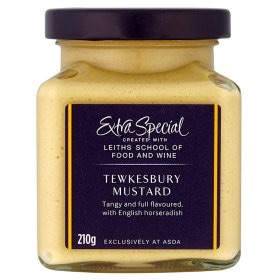Turin, 12 October 2016
I’ve just had a yummy lunch at Vienna airport, which is a bit surprising since airport eateries are not known for quality. It was nothing special; actually, it was very ordinary for this part of the world (this part of the world being Austria). It was two sausages of the frankfurter variety (although longer and thinner than the classic frankfurter), a bread roll, a dollop of mustard, and some grated horseradish. Voilà!
What really made the dish for me was the horseradish. It was the first time I ate horseradish like this, and I found that its slightly sweet tartness calmed the excesses of the mustard.
I have to confess to being a great fan of horseradish, although I joined this particular fan club latish in life: I only discovered the culinary delights of the root once I moved to Austria, when I was already over 40. For those of my readers who (like me) have never seen a horseradish in the flesh (as it were), I throw in a picture.

It’s rather surprising that I came to horseradish so late, because it’s actually quite popular in the UK. A common way of eating it is to mix it with vinegar and use it as a condiment with meat or fish. This commercial offering looks very fancy.

Fancy or plain, I never partook; the closest I ever got was lamb with a vinegar-based mint sauce, the glories of which I have extolled in an earlier post. I’m guessing that the British picked up the habit from the Germans: Wikipedia informs me that a certain John Gerrard, in his Herball, or Generall Historie of Plantes of 1597, writes that “the Horse Radish stamped with a little vinegar put thereto, is commonly used among the Germans for sauce to eat fish with and such like meats as we do mustard.” I wonder if, rather than classic mustard, John Gerrard meant Tewksebury mustard (another British condiment which I have never tried). It seems that the British, since at least the Middle Ages, have been fond of this blend of mustard and grated horseradish. No less a person than Shakespeare mentions it in Henry IV Part II, where he has Falstaff say of Poins: “his wit’s as thick as Tewkesbury Mustard”. Here’s a modern version, sold by the ASDA supermarket chain, so it can’t be too fancy a condiment.

Just to close the circle, a very similar horseradish-mustard blend, called Krensenf, is popular in Austria. I suppose the cook in my airport eatery was expecting me to make my own blend before slathering it onto the frankfurter. Ignorant at that moment of Krensenf, I just blended it in my mouth.
I haven’t mentioned in what dish I first discovered horseradish. It was that great, that glorious, Austrian dish, Tafelspitz. It’s actually a very simple dish: boiled beef, served with boiled root vegetables (carrots, parsnips, celeriac) and re-fried boiled potatoes.

To my mind, what elevates it above similar dishes, like pot au feu in France or bollito misto in Italy, is the sauce into which you dip your morsels of meat: it must be a blend of thickish apple sauce and grated horseradish. The horseradish wakes up what is otherwise a rather bland apple sauce, and this jazzed-up sauce wakes up the otherwise slightly bland meat, to the delight of one’s taste buds. I see that this mixing of sweet with horseradish seems quite popular. Several parts of Eastern Europe (which seems to be the original home of the horseradish, by the way) mix it with beet roots, as do the Ashkhenazi Jews, who often use it as a condiment for gefillte fish. Another recipe from Franconia in southern Germany blends horseradish with lingonberries.
No discussion of horseradish is complete without a mention of wasabi, that wonderful green paste which, together with ginger, accompanies sushi and sashimi.

I’m not particularly keen on the ginger, but wasabi is a must for me – whenever my wife and I eat sushi or sashimi, she gives me her wasabi and I give her my ginger, which she loves; it’s a deal made in heaven. As anyone who has eaten both horseradish and wasabi will know, there is a definite relationship; the tastes are too similar for it to be coincidental. In fact, the two plants are close botanical cousins; the picture above shows the greenish root which is the source of wasabi. But here I have to reveal a mournful truth. In this era of globalized cuisine, where sushi bars seem to be sprouting up everywhere, when we eat wasabi we are nearly always eating horseradish paste mixed with green colourant. The wasabi plant is difficult to grow, so production cannot keep up with demand, hence the substitution. Sad in a way. An Italian friend of mine was recently telling me of a similar case, for a foodstuff I am particularly fond of, bresaola, which has also become a global food-star. In principle, bresaola should be made from cattle reared in the Valtellina, in the Italian Alps. But cattle production in this really quite small Alpine valley cannot possibly keep up with demand, so cattle is shipped in from Brazil to be processed in the Valtellina and stamped “bresaola”.
My wife and I are going to Japan in November. Let’s see if we can find a place which serves real wasabi.
_______________
Horseradish: http://www.herbalextractsplus.com/horseradish-root.html
Horseradish and vinegar: http://www.handmade-treats.co.uk/shop/horseradish-vinegar/
Tewksebury mustard: https://groceries.asda.com/product/mustard/asda-extra-special-tewkesbury-mustard/80755029
Tafelspitz: http://www.lecker.de/tafelspitz-19222.html
Wasabi: http://www.seriouseats.com/2014/03/pantry-essentials-all-about-wasabi.html